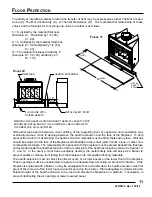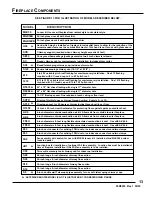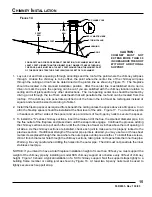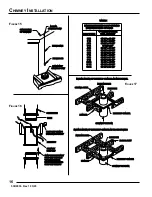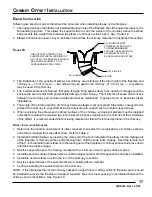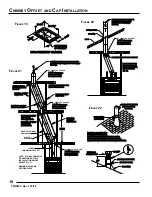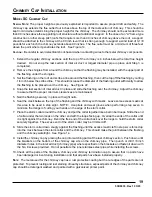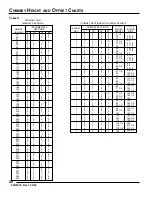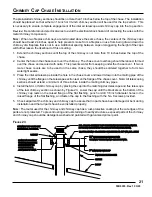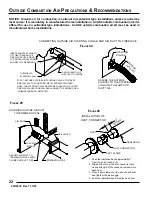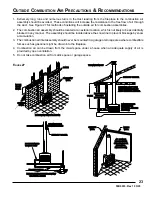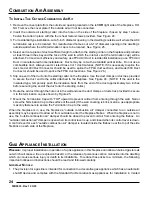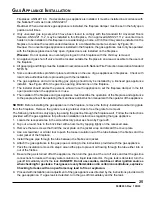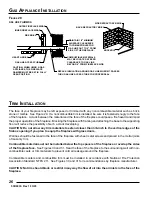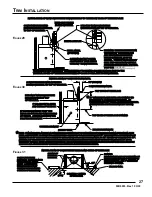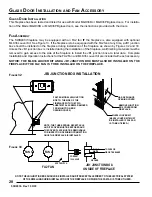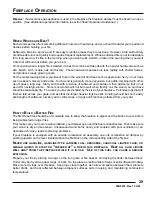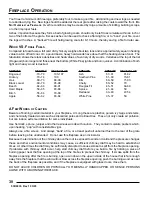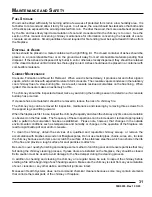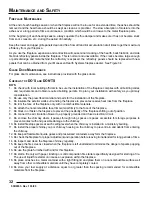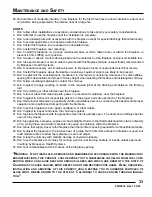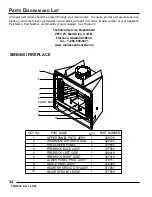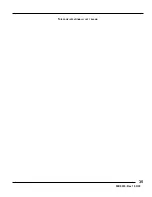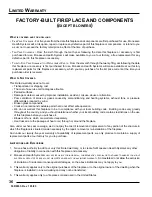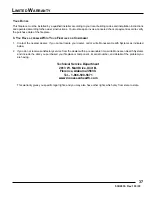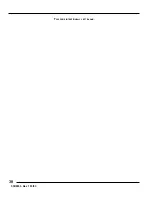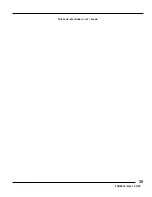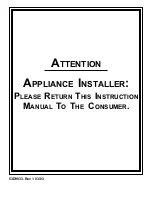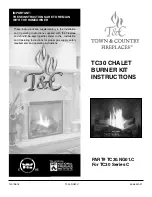
25
G
AS
A
PPLIANCE
I
NSTALLATION
Fireplaces, ANSI Z21.60. If a decorative gas appliance is installed, it must be installed in accordance with
the National Fuel Gas Code, ANSI Z223.1.
C
AUTION
:
When a decorative gas appliance is installed, the fireplace damper must be set in the fully open
position at all times.
2. Only unvented gas log sets which have been found to comply with the Standard for Unvented Room
Heaters, ANSI Z21.11.2, may be installed in this fireplace. If an approved ANSI Z21.11.2 unvented room
heater is to be installed in this fireplace in a residential type home, a H36 Hood may also be installed on the
fireplace to reduce the recommended clearance to a combustible mantel as shown by Figure 30.
C
AUTION
:
If an unvented gas appliance is installed in the fireplace, the gas appliance must only be operated
with the fireplace glass doors fully open, if glass doors are installed on the fireplace.
W
ARNING
:
Do not operate an unvented gas log set in this fireplace with the chimney removed.
3. An approved gas shut off valve must be located outside the fireplace in an area accessible to the users of
the fireplace.
4. All gas piping and fittings must be installed in accordance with National Fire Protection Association Standard
NFPA 54.
5. Some code authorities prohibit or place restrictions on the use of gas appliances in fireplaces. Check with
local code authorities before proceeding with the installation.
6. The gas appliance and all connecting gas piping should only be installed by a licensed gas appliance
installer. See Figure 28 for the gas line opening dimensions on the fireplace.
7. The installer should advise the persons who will use the appliance to set the fireplace damper in the full
open position when the appliance is in use.
8. The installer of the fireplace and gas appliance must describe the operation of the fireplace and appliance
to the people who will be operating them and leave all instruction manuals with the operator of the appliance.
NOTICE:
Before installing the gas appliance in the fireplace, remove the factory-installed woodburning grate
from the fireplace. Remove the grate’s rear leg retainer clips to free the grate for removal.
The following instructions only apply to passing the gas line through the fireplace wall. Follow the instructions
provided with the gas appliance for particular installation instructions regarding that gas appliance.
1. Locate the recessed area in the side refractory panel as shown by Figure 28.
2. Tap out a round hole in the brick liner with a hammer by tapping lightly on the recessed area.
3. Remove the two screws that hold the cover plate on the jacket wrap and discard the cover plate.
4. Use a screwdriver or similar tool to push the loose insulation out of the tube between the firebox and the
outer jacket of the fireplace.
5. Install the gas pipe through the tube between the firebox and jacket.
6. Attach the gas appliance to the gas pipe according to the instructions provided with the gas appliance.
7. Pack the insulation removed in step 4 around the pipe to prevent air flowing through the tube either into or
out of the firebox.
8. Be sure the gas is turned off at the appliance, then turn the gas on at the cut off valve and test the gas line
connections for leaks with soapy water solution or a liquid leak detector. If a gas leak is detected, turn the
gas off immediately and fix the leak.
DANGER: Do not use candles, matches or other ignition sources
when checking for gas leaks. Fuel gases are very flammable and in certain concentrations, explosive.
Checking for leaks with an open flame may lead to fire or explosion.
9. Proceed with installation and adjustment of the gas appliance as directed by the instructions provided with
the gas appliance. If a gas leak is detected, turn the gas off immediately and fix the leak.
53D9033. Rev 1 03/03

